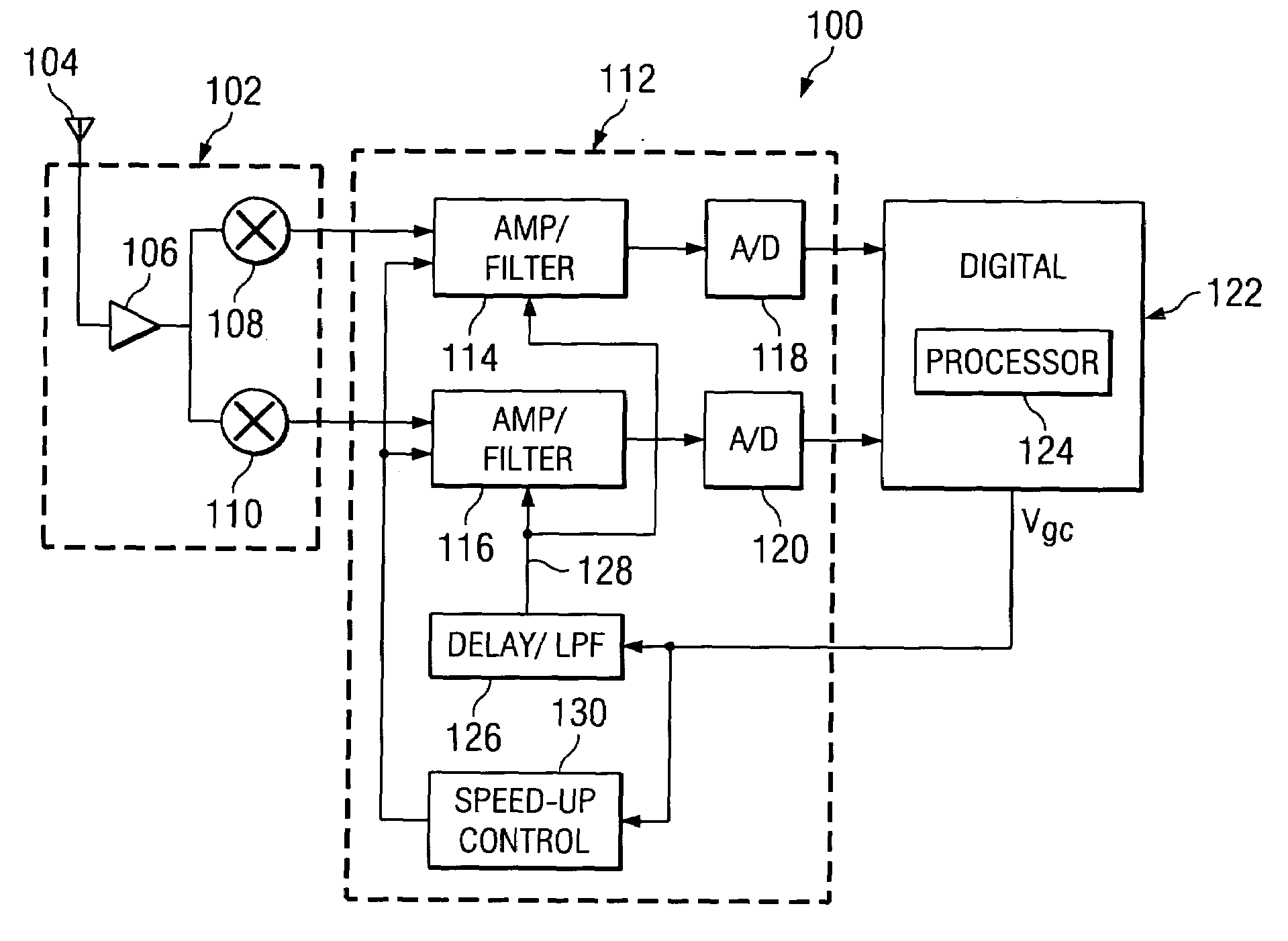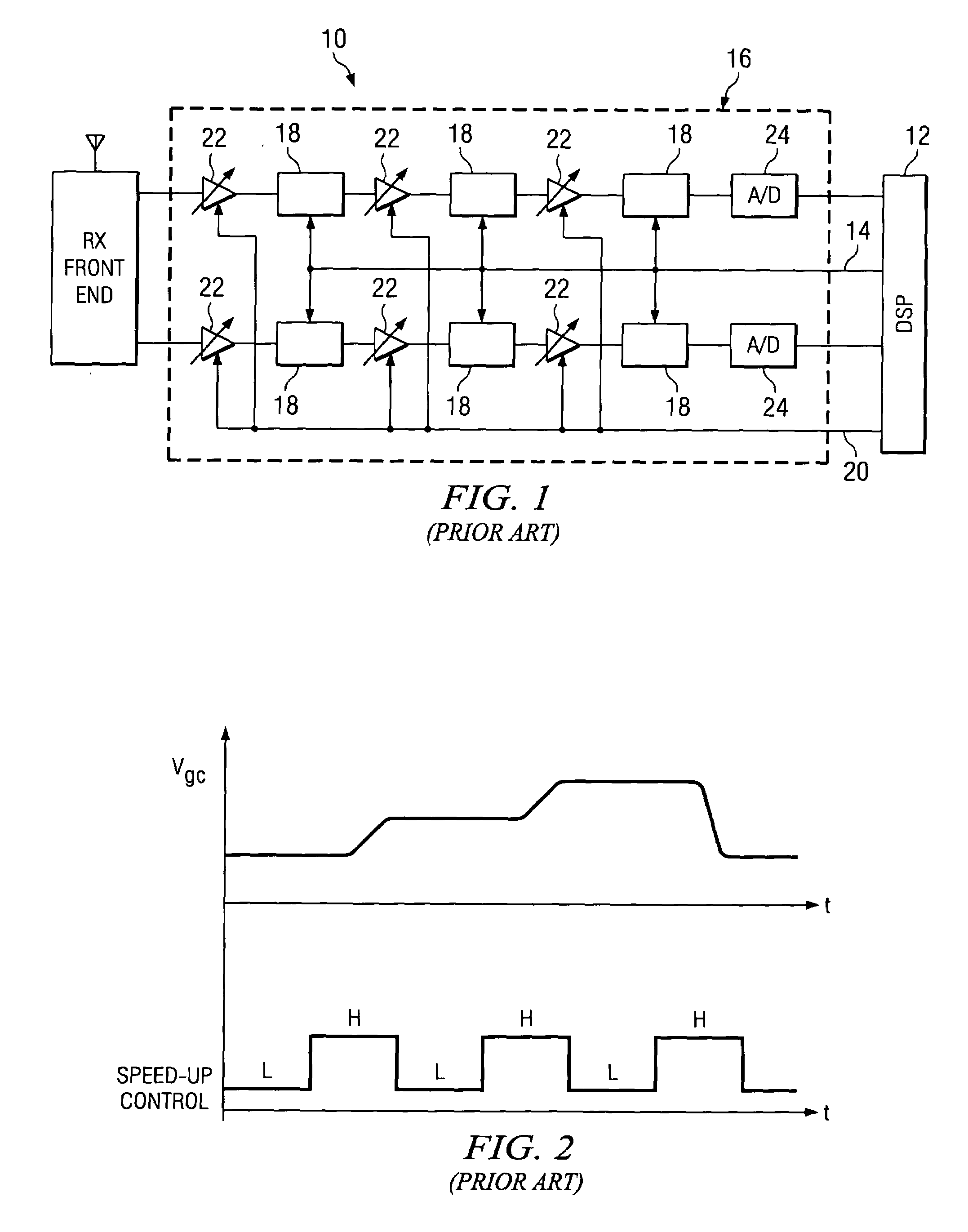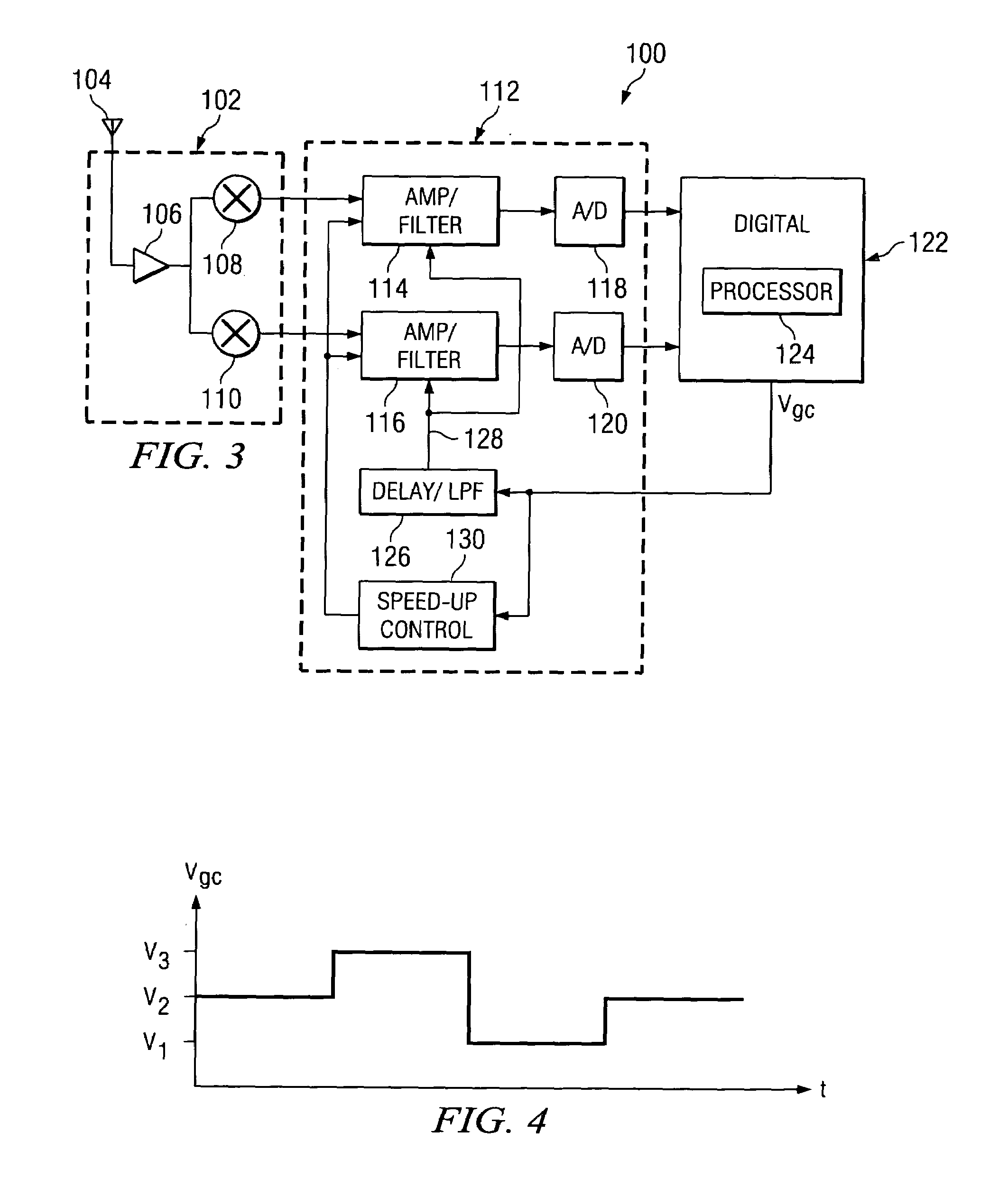Speed-up mode implementation for direct conversion receiver
- Summary
- Abstract
- Description
- Claims
- Application Information
AI Technical Summary
Benefits of technology
Problems solved by technology
Method used
Image
Examples
Embodiment Construction
[0023]FIG. 3 illustrates a block diagram of a receiver 100 programmed and / or configured to implement speed-up mode control in accordance with an aspect of the present invention. The receiver 100 includes a receiver front end 102 operative to receive an input RF signal from an associated antenna 104. The receiver front end 102 includes an amplifier / filter network 106 for amplifying the input signal to a desired level and removing unwanted noise. The amplifier / filter network receives an output signal from mixers 108 and 110. Each of the mixers 108 and 110 is associated with a local oscillator (not shown) to mix the filtered input signal with a desired phase shift. For example, the mixers 108 and 110 provide mixed signals that have a relative phase shift of 90 degrees (e.g., quadrature related mixers). By way of illustration, one of the mixed signals can have a 90 phase shift while the other mixed signal has a 0 degree phase shift. Alternatively, one might have a −45 degree phase shift...
PUM
 Login to View More
Login to View More Abstract
Description
Claims
Application Information
 Login to View More
Login to View More - R&D
- Intellectual Property
- Life Sciences
- Materials
- Tech Scout
- Unparalleled Data Quality
- Higher Quality Content
- 60% Fewer Hallucinations
Browse by: Latest US Patents, China's latest patents, Technical Efficacy Thesaurus, Application Domain, Technology Topic, Popular Technical Reports.
© 2025 PatSnap. All rights reserved.Legal|Privacy policy|Modern Slavery Act Transparency Statement|Sitemap|About US| Contact US: help@patsnap.com



